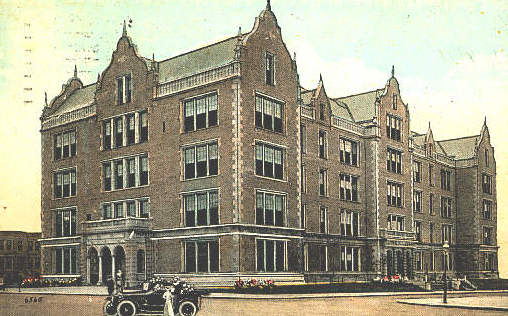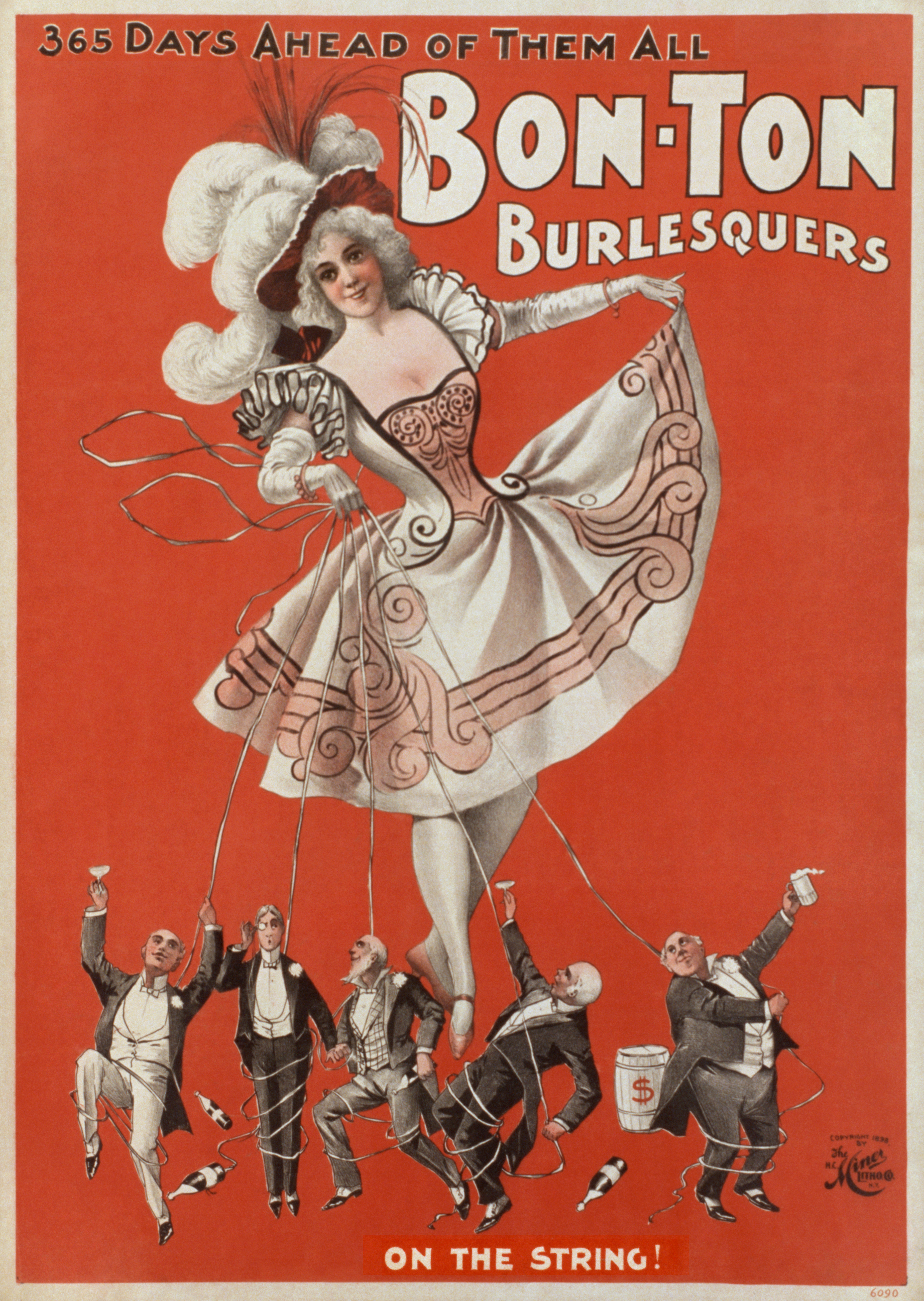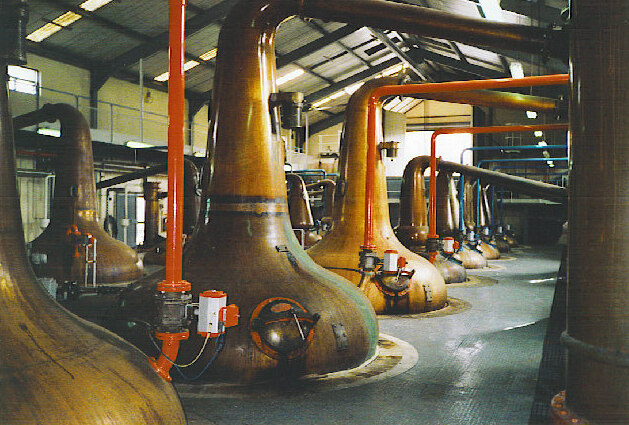|
Baby Face (film)
''Baby Face'' is a 1933 American pre-Code drama film directed by Alfred E. Green for Warner Bros., starring Barbara Stanwyck as Lily Powers, and featuring George Brent. Based on a story by Darryl F. Zanuck (under the pseudonym Mark Canfield), ''Baby Face'' portrays an attractive young woman who uses sex to advance her social and financial status. Twenty-five-year-old John Wayne appears briefly as one of Powers's lovers. Marketed with the salacious tagline "She had ''it'' and made ''it'' pay", the film's open discussion of sex made it one of the most notorious films of the Pre-Code Hollywood eraTuran, Kenneth (2004) ''Never Coming to a Theater Near You: A Celebration of a Certain Kind of Movie''. Public Affairs . p.375 and helped bring the era to a close as enforcement of the code became stricter beginning in 1934. Mark A. Vieira, author of ''Sin in Soft Focus: Pre-Code Hollywood'' has said, "''Baby Face'' was certainly one of the top 10 films that caused the Production Code t ... [...More Info...] [...Related Items...] OR: [Wikipedia] [Google] [Baidu] |
Alfred E
Alfred may refer to: Arts and entertainment *'' Alfred J. Kwak'', Dutch-German-Japanese anime television series * ''Alfred'' (Arne opera), a 1740 masque by Thomas Arne * ''Alfred'' (Dvořák), an 1870 opera by Antonín Dvořák *"Alfred (Interlude)" and "Alfred (Outro)", songs by Eminem from the 2020 album '' Music to Be Murdered By'' Business and organisations * Alfred, a radio station in Shaftesbury, England * Alfred Music, an American music publisher * Alfred University, New York, U.S. * The Alfred Hospital, a hospital in Melbourne, Australia People * Alfred (name) includes a list of people and fictional characters called Alfred * Alfred the Great (848/49 – 899), or Alfred I, a king of the West Saxons and of the Anglo-Saxons Places Antarctica * Mount Alfred (Antarctica) Australia * Alfredtown, New South Wales * County of Alfred, South Australia Canada * Alfred and Plantagenet, Ontario * Alfred Island, Nunavut * Mount Alfred, British Columbia United States * A ... [...More Info...] [...Related Items...] OR: [Wikipedia] [Google] [Baidu] |
Clara Bow
Clara Gordon Bow (; July 29, 1905 – September 27, 1965) was an American actress who rose to stardom during the silent film era of the 1920s and successfully made the transition to "talkies" in 1929. Her appearance as a plucky shopgirl in the film '' It'' brought her global fame and the nickname " The It Girl". Bow came to personify the Roaring Twenties and is described as its leading sex symbol. Bow appeared in 46 silent films and 11 talkies, including hits such as '' Mantrap'' (1926), ''It'' (1927), and ''Wings'' (1927). She was named first box-office draw in 1928 and 1929 and second box-office draw in 1927 and 1930.''Exhibitors Herald'', December 31, 1927 Her presence in a motion picture was said to have ensured investors, by odds of almost two-to-one, a "safe return". At the apex of her stardom, she received more than 45,000 fan letters in a single month (January 1929). Two years after marrying actor Rex Bell in 1931, Bow retired from acting and became a rancher in Nevada ... [...More Info...] [...Related Items...] OR: [Wikipedia] [Google] [Baidu] |
African Americans
African Americans (also referred to as Black Americans and Afro-Americans) are an ethnic group consisting of Americans with partial or total ancestry from sub-Saharan Africa. The term "African American" generally denotes descendants of Slavery in the United States, enslaved Africans who are from the United States. While some Black immigrants or their children may also come to identify as African-American, the majority of first generation immigrants do not, preferring to identify with their nation of origin. African Americans constitute the second largest racial group in the U.S. after White Americans, as well as the third largest ethnic group after Hispanic and Latino Americans. Most African Americans are descendants of enslaved people within the boundaries of the present United States. On average, African Americans are of West Africa, West/Central Africa, Central African with some European descent; some also have Native Americans in the United States, Native American and othe ... [...More Info...] [...Related Items...] OR: [Wikipedia] [Google] [Baidu] |
Will To Power
The will to power (german: der Wille zur Macht) is a concept in the philosophy of Friedrich Nietzsche. The will to power describes what Nietzsche may have believed to be the main driving force in humans. However, the concept was never systematically defined in Nietzsche's work, leaving its interpretation open to debate. Usage of the term by Nietzsche can be summarized as self-determination, the concept of actualizing one's will onto one's self or one's surroundings, and coincides heavily with egoism. Alfred Adler incorporated the will to power into his individual psychology. This can be contrasted to the other Viennese schools of psychotherapy: Sigmund Freud's pleasure principle (will to pleasure) and Viktor Frankl's logotherapy (will to meaning). Each of these schools advocates and teaches a very different essential driving force in human beings. ''Kraft'' vs. ''Macht'' Some of the misconceptions of the will to power, including Nazi appropriation of Nietzsche's philosop ... [...More Info...] [...Related Items...] OR: [Wikipedia] [Google] [Baidu] |
Friedrich Nietzsche
Friedrich Wilhelm Nietzsche (; or ; 15 October 1844 – 25 August 1900) was a German philosopher, prose poet, cultural critic, philologist, and composer whose work has exerted a profound influence on contemporary philosophy. He began his career as a classical philologist before turning to philosophy. He became the youngest person ever to hold the Chair of Classical Philology at the University of Basel in 1869 at the age of 24. Nietzsche resigned in 1879 due to health problems that plagued him most of his life; he completed much of his core writing in the following decade. In 1889, at age 45, he suffered a collapse and afterward a complete loss of his mental faculties, with paralysis and probably vascular dementia. He lived his remaining years in the care of his mother until her death in 1897 and then with his sister Elisabeth Förster-Nietzsche. Nietzsche died in 1900, after experiencing pneumonia and multiple strokes. Nietzsche's writing spans philosophical polemic ... [...More Info...] [...Related Items...] OR: [Wikipedia] [Google] [Baidu] |
American Burlesque
American burlesque is a genre of variety show derived from elements of Victorian burlesque, music hall and minstrel shows. Burlesque became popular in the United States in the late 1860s and slowly evolved to feature ribald comedy and female nudity. By the late 1920s, the striptease element overshadowed the comedy and subjected burlesque to extensive local legislation. Burlesque gradually lost popularity beginning in the 1940s. A number of producers sought to capitalize on nostalgia for the entertainment by recreating burlesque on the stage and in Hollywood films from the 1930s to the 1960s. There has been a resurgence of interest in this format since the 1990s. Literary and theatrical origins The term "burlesque" more generally means a literary, dramatic or musical work intended to cause laughter by caricaturing the manner or spirit of serious works, or by ludicrous treatment of their subjects. [...More Info...] [...Related Items...] OR: [Wikipedia] [Google] [Baidu] |
Stripper
A stripper or exotic dancer is a person whose occupation involves performing striptease in a public adult entertainment venue such as a strip club. At times, a stripper may be hired to perform at a bachelor party or other private event. Modern Americanized forms of stripping minimize interaction by strippers with customers, reducing the importance of ''tease'' in the performance in favor of speed to undress (''strip''). Not all strippers are comfortable dancing topless or fully nude, but in general, full nudity is common where not prohibited by law. The integration of the burlesque pole as a nearly ubiquitous prop has shifted the emphasis in the performance toward a more acrobatic, explicit expression compared to the slow-developing burlesque style. Most strippers work in strip clubs. A "house dancer" works for a particular club or franchise, while a "feature dancer" tends to have her own celebrity, touring a club circuit making appearances. Entertainers (dancers) are o ... [...More Info...] [...Related Items...] OR: [Wikipedia] [Google] [Baidu] |
Shoemaking
Shoemaking is the process of making footwear. Originally, shoes were made one at a time by hand, often by groups of shoemakers, or cobblers (also known as '' cordwainers''). In the 18th century, dozens or even hundreds of masters, journeymen and apprentices (both men and women) would work together in a shop, dividing up the work into individual tasks. A customer could come into a shop, be individually measured, and return to pick up their new shoes in as little as a day. Everyone needed shoes, and the median price for a pair was about one day’s wages for an average journeyman. The shoemaking trade flourished in the eighteenth and early nineteenth centuries but began to be affected by industrialization in the later nineteenth century. Traditional handicraft shoemaking has now been largely superseded in volume of shoes produced by industrial mass production of footwear, but not necessarily in quality, attention to detail, or craftsmanship. Today, most shoes are made on a vo ... [...More Info...] [...Related Items...] OR: [Wikipedia] [Google] [Baidu] |
Still
A still is an apparatus used to distill liquid mixtures by heating to selectively boil and then cooling to condense the vapor. A still uses the same concepts as a basic distillation apparatus, but on a much larger scale. Stills have been used to produce perfume and medicine, water for injection (WFI) for pharmaceutical use, generally to separate and purify different chemicals, and to produce distilled beverages containing ethanol. Application Since ethanol boils at a much lower temperature than water, simple distillation can separate ethanol from water by applying heat to the mixture. Historically, a copper vessel was used for this purpose, since copper removes undesirable sulfur-based compounds from the alcohol. However, many modern stills are made of stainless steel pipes with copper linings to prevent erosion of the entire vessel and lower copper levels in the waste product (which in large distilleries is processed to become animal feed). Copper is the prefer ... [...More Info...] [...Related Items...] OR: [Wikipedia] [Google] [Baidu] |
Prohibition In The United States
In the United States from 1920 to 1933, a nationwide constitutional law prohibited the production, importation, transportation, and sale of alcoholic beverages. The alcohol industry was curtailed by a succession of state legislatures, and finally ended nationwide under the Eighteenth Amendment to the United States Constitution, ratified on January 16, 1919. Prohibition ended with the ratification of the Twenty-first Amendment, which repealed the Eighteenth Amendment on December 5, 1933. Led by pietistic Protestants, prohibitionists first attempted to end the trade in alcoholic drinks during the 19th century. They aimed to heal what they saw as an ill society beset by alcohol-related problems such as alcoholism, family violence, and saloon-based political corruption. Many communities introduced alcohol bans in the late 19th and early 20th centuries, and enforcement of these new prohibition laws became a topic of debate. Prohibition supporters, called "drys", presented ... [...More Info...] [...Related Items...] OR: [Wikipedia] [Google] [Baidu] |
Erie, Pennsylvania
Erie (; ) is a city on the south shore of Lake Erie and the county seat of Erie County, Pennsylvania, United States. Erie is the fifth largest city in Pennsylvania and the largest city in Northwestern Pennsylvania with a population of 94,831 at the 2020 census. The estimated population in 2021 had decreased to 93,928. The Erie metropolitan area, equivalent to all of Erie County, consists of 266,096 residents. The Erie-Meadville combined statistical area had a population of 369,331 at the 2010 census. Erie is roughly equidistant from Buffalo and Cleveland, each being about 100 miles (160 kilometers) away. Erie's manufacturing sector remains prominent in the local economy, though insurance, healthcare, higher education, technology, service industries, and tourism are emerging as significant economic drivers. As with the other Great Lakes port cities, Erie is accessible to the oceans via the Lake Ontario and St. Lawrence River network in Canada. The local climate is hu ... [...More Info...] [...Related Items...] OR: [Wikipedia] [Google] [Baidu] |
Speakeasy
A speakeasy, also called a blind pig or blind tiger, is an illicit establishment that sells alcoholic beverages, or a retro style bar that replicates aspects of historical speakeasies. Speakeasy bars came into prominence in the United States during the Prohibition era (1920–1933, longer in some states). During that time, the sale, manufacture, and transportation ( bootlegging) of alcoholic beverages was illegal throughout the United States. Speakeasies largely disappeared after Prohibition ended in 1933. The speakeasy-style trend began in 2000 with the opening of the bar Milk & Honey. Etymology The phrase "speak softly shop", meaning a "smuggler's house", appeared in a British slang dictionary published in 1823. The similar phrase "speak easy shop", denoting a place where unlicensed liquor sales were made, appeared in a British naval memoir written in 1844. The precise term "speakeasy" dates from no later than 1837 when an article in the ''Sydney Herald'' newspaper in ... [...More Info...] [...Related Items...] OR: [Wikipedia] [Google] [Baidu] |









